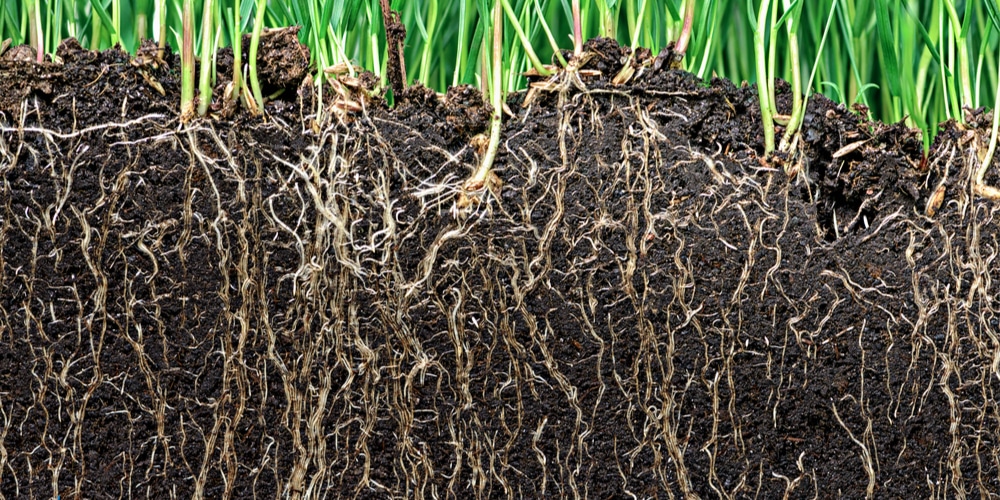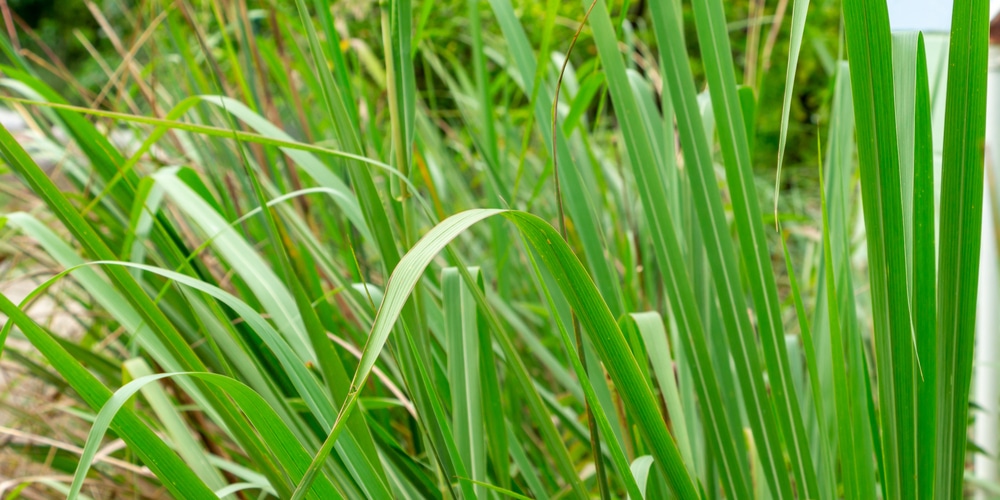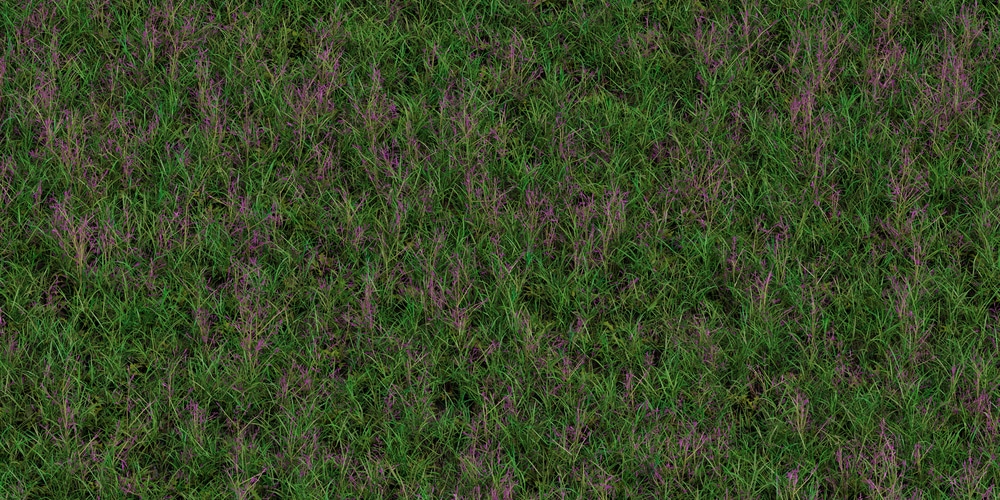Common Spring Lawn Diseases
As temperatures rise and the Spring season begins, your lawn can become susceptible to various diseases.
Prompt identification and treatment are crucial to maintaining a healthy lawn.
Recognizing Common Symptoms
- Powdery Mildew: This disease manifests as fine white filaments on grass blades. Infected turf may first appear yellow and later turn brown, possibly leading to thinning or dying grass.For more about this disease, see how to identify Grass Fungus.
- Spring Dead Spot: Symptoms include circular patches of dead grass that can persist into the growing season.Treatments involve adjusting soil pH and maintaining proper watering habits. Learn to Control, and Prevent Spring Dead Spot.
- Take-All Root Rot (TARR): Look for chlorotic, yellow to light green patches that can eventually become brown and bare.Check for dark lesions on stolons and rhizomes. For identification help, visit the Common Lawn Diseases guide.
Assessing Lawn Thatch and Soil Compaction
- Lawn Thatch: Measure the thatch layer; if it exceeds half an inch, it may contribute to disease risk.
- Dethatching in spring can mitigate this issue.
- Soil Compaction: Perform a simple screwdriver test.
- If it’s hard to push into the soil, aeration may be necessary to reduce compaction and disease susceptibility.
Treatment Strategies for Spring Lawn Diseases
Effective treatment of spring lawn diseases hinges on precise cultural habits, appropriate chemical interventions, and the use of organic remedies when possible.
These targeted strategies ensure the protection and recovery of your lawn from common afflictions.
Cultural Practices for Disease Prevention
- Aerate your soil: Ensure your lawn has proper aeration to facilitate good drainage and reduce the chances of disease.
- Maintain proper mowing height: Cutting your grass at the ideal height prevents stress and reduces vulnerability to pathogens.
- Water wisely: Overwatering can promote disease, so water your lawn deeply yet infrequently to foster strong root systems.
Chemical Treatments and Their Application
- Identify the disease: Match the chemical fungicide to the specific lawn disease you are treating.
- Follow application guidelines strictly: Apply the fungicide according to the manufacturer’s instructions for safety and efficacy.
- Monitor and reapply if necessary: Keep an eye on the lawn’s response, applying additional treatments as directed.
Organic Alternatives for Disease Management
- Neem oil: Apply neem oil as a natural fungicide that also deters various lawn pests.
- Baking soda solution: Use a solution of baking soda and water to treat mild fungal issues on your grass.
- Compost tea: Drench your lawn in compost tea to build up beneficial microbiology that can help combat diseases.
Maintaining Lawn Health Post-Treatment
Once your lawn has been treated for diseases, the focus shifts to maintaining its health to prevent future outbreaks.
Proper care and continuous monitoring are essential for sustaining a vibrant and resilient lawn.
Scheduling Lawn Care and Maintenance
- Regular Watering: Schedule watering your lawn deeply but infrequently to encourage strong root growth.
- Aim for early morning to reduce evaporation and discourage disease proliferation.
- Fertilization: Apply fertilizer according to the specific needs of your lawn.
- Take care not to over-fertilize, which can lead to excessive growth and disease susceptibility.
- Mowing: Mow with sharp blades at the ideal height for your grass type.
- This helps the grass recover and reduces stress on the lawn.
- Aeration: Plan to aerate your lawn annually or biannually to improve nutrient uptake and water penetration.
- Overseeding: Introduce new grass seed to your lawn in the fall to improve density and reduce the chance of disease recurrence.
Monitoring Lawn Recovery Progress
- Check for Symptoms: Regularly inspect your lawn for any signs of returning disease like discolored spots or patches.
- Growth Patterns: Observe the grass regrowth patterns.
- Uniform growth is a good indicator of recovery, while patchy or stunted growth may signal a problem.
- Soil Health: Test your soil periodically to ensure a balanced pH and adequate nutrient levels, which can impact lawn vitality.
Preventive Measures for Future Outbreaks
To maintain a resilient lawn that can resist spring diseases, it’s crucial to focus on preventive measures such as proper nutrition and seasonal maintenance.
Enhancing Turf Immunity with Proper Nutrition
- Grass Species: Select disease-resistant turf varieties suited to your climate.
- Soil Testing: Perform regular soil tests to assess nutrient levels and pH balance.
- Fertilization: Apply fertilizers with the appropriate nutrients—nitrogen, phosphorus, and potassium—tailored to your soil’s needs.
Seasonal Lawn Care Tips
- Watering Practices: Water your lawn deeply but infrequently to encourage robust root systems, and do so in the early morning to minimize prolonged moisture on grass blades.
- Thatch Management: Aerate and dethatch your lawn to improve water and nutrient flow.
- Mowing Strategy: Keep blades sharp and mow at the recommended height for your grass type to reduce stress on the turf.
Frequently Asked Questions
This section delves into the critical aspects of spotting spring lawn diseases and addressing them effectively, catering to common concerns for maintaining a healthy lawn.
What are common indicators of fungal infections in lawns during springtime?
- Look for unusual discoloration or brown patches, as these can be symptoms of lawn diseases.
- Noticeable thinning or bare spots can also signal an underlying fungal issue.
What are the best practices for treating turfgrass diseases as the weather warms?
- Apply fungicides according to the specific disease identified.
- Adjust your watering practices to water in the early morning, reducing moisture levels at night that foster disease growth.
How can one differentiate between lawn damage caused by pests and diseases in the spring?
- In case of pests, you will often find evidence such as bite marks or the pests themselves.
- Disease damage typically does not include these signs and is more uniform across affected areas.
What steps should homeowners take to prevent spring lawn diseases?
- Ensure proper lawn aeration to improve airflow and reduce thatch.
- Balance soil pH and nutrients with appropriate treatments to bolster lawn immunity.
Can the appearance of moss and thatch indicate potential lawn disease as seasons change?
- Yes, moss growth signals acidic soil, which can harbor diseases.
- Excessive thatch can hold moisture and create a breeding ground for fungal pathogens.
What professional treatments are recommended for severe lawn diseases post-winter?
- Consult a lawn care professional for a comprehensive assessment and treatment plan.
- They might suggest targeted fungicide applications.
- They might also recommend restorative lawn care practices tailored to your specific issue.
Last update on 2025-04-16 / Affiliate links / Images from Amazon Product Advertising API





